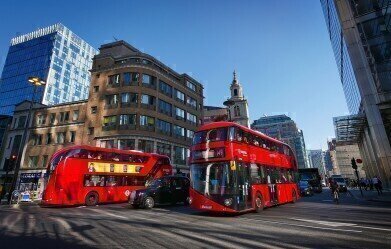Air Clean Up
How Is London Trying to Cut Pollution?
Mar 07 2019
With a population of over eight million people, London is the UK’s largest city and home to one of the world’s most advanced public transport systems. Despite the fact that a significant proportion of the capital’s population do not own a car themselves (46%), the majority still do own at least one private vehicle, contributing to significant pollution on the city’s streets.
In fact, the UK government has several times fallen afoul of EU clean air regulations limits for pollution in its capital and beyond, incurring millions of pounds’ worth of fines and facing successful legal challenges by the environmental law firm ClientEarth. With that in mind, the authorities have sought to address the problem by improving air quality and reducing transport-related pollution in a number of different ways. Here are five measures brought in by the Mayor’s office to try and redress the balance of air quality in the nation’s capital.
Toxicity charge
Since coming into office in May 2016, London Mayor Sadiq Khan has placed an emphasis on addressing the city’s air pollution issues. One of his first significant measures was the introduction of the “toxicity charge”, otherwise known as the “T-charge”. Applying to vehicles which do not comply with Euro 6 Standards, the charge is set at a flat £10 and is imposed on top of the existing congestion charge, meaning that cars registered before 2006 (and some older models) have to pay £21.50 to enter the city.
ULEZ
The ultra-low emissions zone (ULEZ) is intended to replace the T-charge from next month onwards. Originally scheduled to come into effect in 2020, Khan has brought the introduction of the ULEZ scheme forward a full year, meaning that from 8th April 2019, all cars, motorcycles, mopeds and vans will have to pay £12.50 per day to enter the city, while buses and lorries must pay £100 to do so. It’s hoped that the ULEZ scheme will cut nitrous oxide (NOx) emissions by up to 50% in central London.
Schools
Alarming research about the effects of daily exposure to air pollution on young lungs has prompted an audit of the air quality surrounding 50 London schools with reportedly high levels of nitrogen dioxide (NO2). Meanwhile, many individual schools have sought to help their students by introducing walk-to-school initiatives, stocking up on asthma inhalers and medication, placing air purifiers in the classroom and handing out air masks to students.
Public transport
The bus system in London is extensive and highly effective, but until recently many of the models in service were of an older and more polluting variety. The government has poured more than £300 million into revamping its fleet of buses by retrofitting certain models and doing away with pure diesel double-deckers as of 2018 altogether. It’s predicted that the new measures could bring down bus emissions of NOx by as much as 84%.
Taxis
A recent report found that the famous London black cabs could be as much as 30 times more polluting than similar counterparts owned by private residents. The government has aimed to combat this worrying trend by offering “zero-emission” ranks to taxi drivers who use electric vehicles (EVs) or hybrid technology, stipulating that those applying for a new license from January 1st 2018 onwards must have a vehicle that is at least capable of zero emissions. It has seen nearly 1,000 cabbies switch to cleaner vehicles since its introduction.
Events
May 05 2024 Seville, Spain
May 13 2024 Munich, Germany
May 23 2024 Beijing, China
May 23 2024 Beijing, China
Jun 10 2024 Algiers, Algeria














